August's Monthly Newsletter
The dog days of summer are those days when Sirius, the Dog Star (so called for the way it follows Orion into the night sky), rises above the eastern horizon before sunrise and becomes the morning star. The English term comes from the Latin dies caniculares, itself a calque of the Greek. Those ancient astronomers whose fecund imaginations gave the constellations the names we still use today are relentlessly impressive in many ways, though as a spectacularly myopic person it is perhaps their enviable eyesight which I find most astonishing.
Long before Virgil wrote of the dangers to the vintner of that season “… when the Dog-star cleaves the thirsty Ground” in Book II of his Georgics (line 484, trans. Dryden 1709), for the Egyptians the appearance of Sirius was celebrated as a precursor to the life-giving floods of the Nile and the star was worshipped in the person of the goddess Sopdet.
For the Greeks the arrival of the heat of summer had altogether more violent overtones, bringing heat, disease, and violent storms. In the Iliad, these dog days heralded by the rising of Sirius are used as a metaphor for Achilles’ arrival at Troy, and the portent of the death of Priam’s son Hector.
Him, as he blazing shot across the field,
The careful eyes of Priam first beheld:
Not half so dreadful rises to the sight,
Through the thick gloom of some tempestuous night,
Orion's dog, the year when autumn weighs,
And o'er the feebler stars exerts his rays;
Terrific glory! for his burning breath
Taints the red air with fevers, plagues, and death.
So flamed his fiery mail. Then wept the sage:
He strikes his reverend head, now white with age;
He lifts his withered arms; obtests the skies;
He calls his much-loved son with feeble cries […]Iliad. trans. Alexander Pope c. 1707-15, Book XXII, lines 34ff
And indeed as these dog days draw to a close I find myself in Greece, contemplating the Aegean (and grilled sardines) and staying with friends on the island of Evia. For the ancients it was Eubœa, and a couple of days ago we clambered up a steep escarpment where marble was quarried from the dawn of time until the crumbling of the Roman Empire. From the vertiginous marble quarry we could see the ruins of the acropolis of ancient Styra above us. The city state is also mentioned in the Iliad, in the list of territories which sent ships to aid Troy.
Eubœa next her martial sons prepares,
And sends the brave Abantes to the wars;
Breathing revenge, in arms they take their way
From Chalcis' walls, and strong Eretria;
The Isteian fields for generous vines renowned,
The fair Carystos, and the Styrian ground […]Iliad. trans. Pope, Book II, The Catalogue of the Ships
These ships set sail from the bay below, round the bottom of the island and up across the Aegean to aid the ultimately doomed cause of the Trojans. Relieved to have successfully, and uneventfully, negotiated the treacherous descent in borrowed walking boots we repaired to a taverna for a restorative lunch of cold beer, grilled fish, and beans.
As we ate looking out to sea I contemplated not only the boats that, according to Homer, once sailed from here to the doomed city of Troy, but also the journey of Aeneas which would follow the fall of Troy and ultimately lead him to the coast of central Italy (here’s a link to episode one of my podcast which is about just that; no paywall).
Not for the first time I marvelled at the hazy interweaving in the Mediterranean of the solidity of historical artefacts and the diaphanous, fleeting nature of legend: a quarry, a very solid acropolis, long-lost ships crossing shimmering seas, and a cheerful young waiter with a baseball shirt, tattoos, and excellent English bringing grilled red mullet and beer, all coexisting simultaneously.
All best,
Agnes


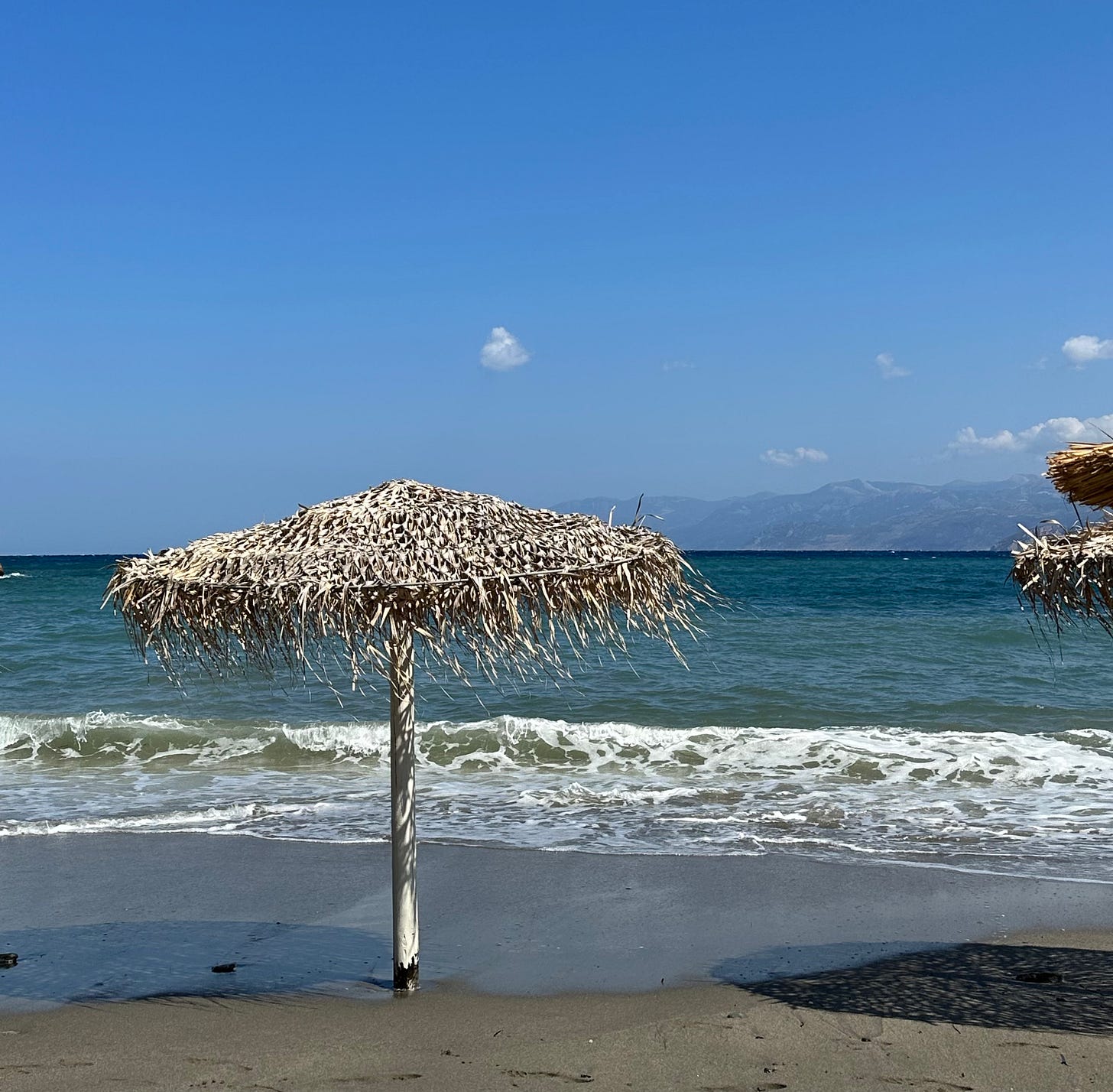
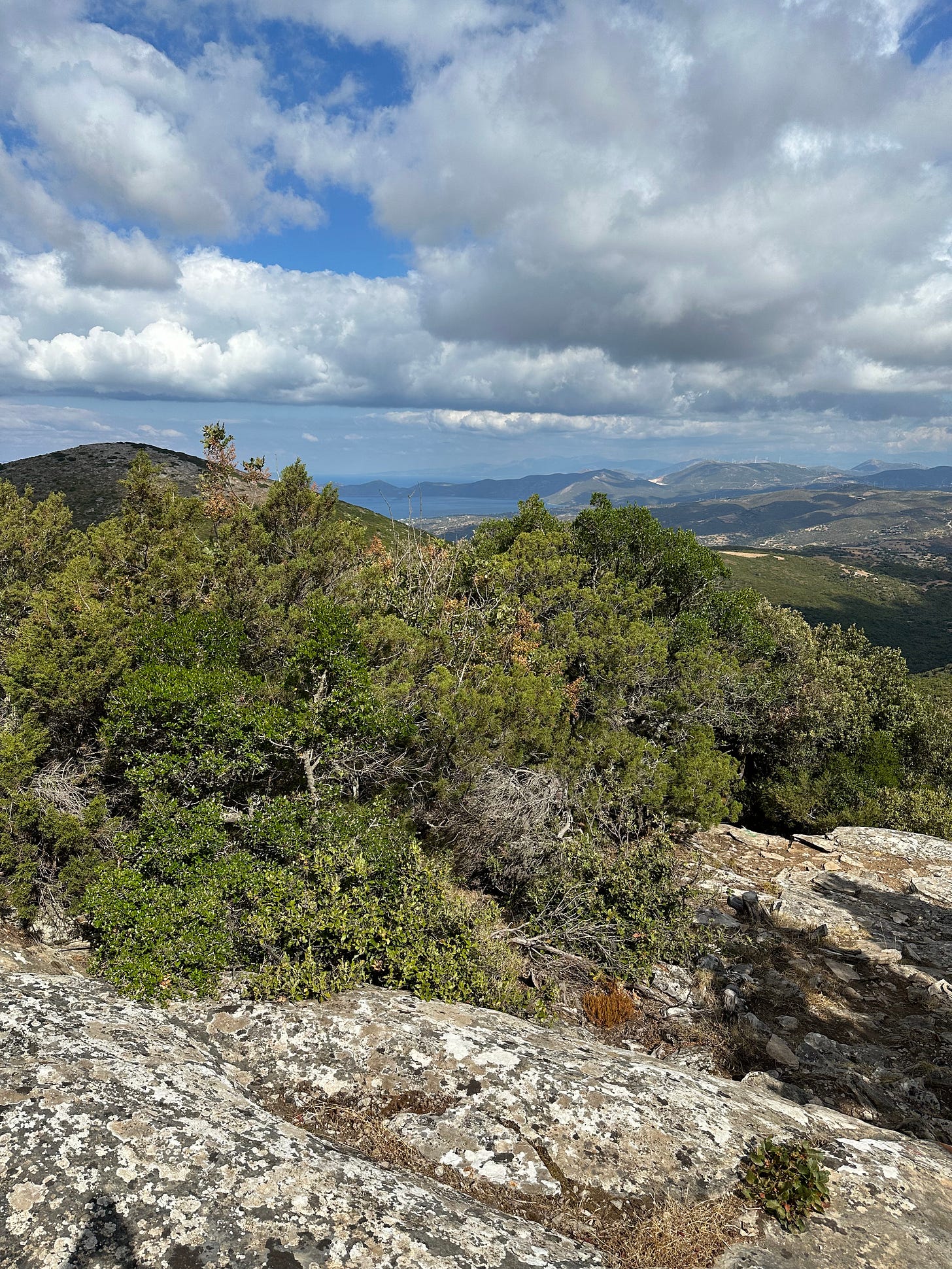
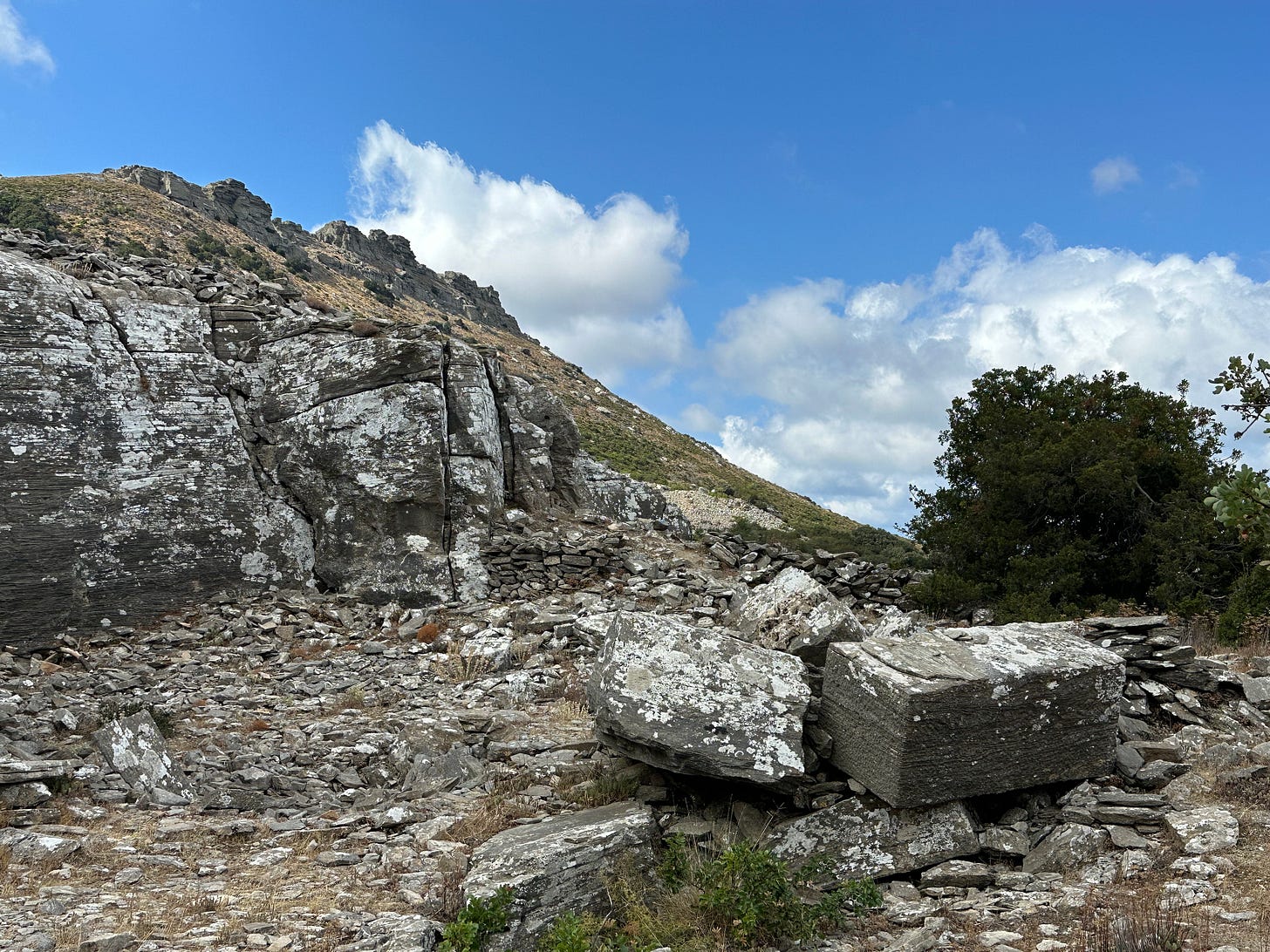
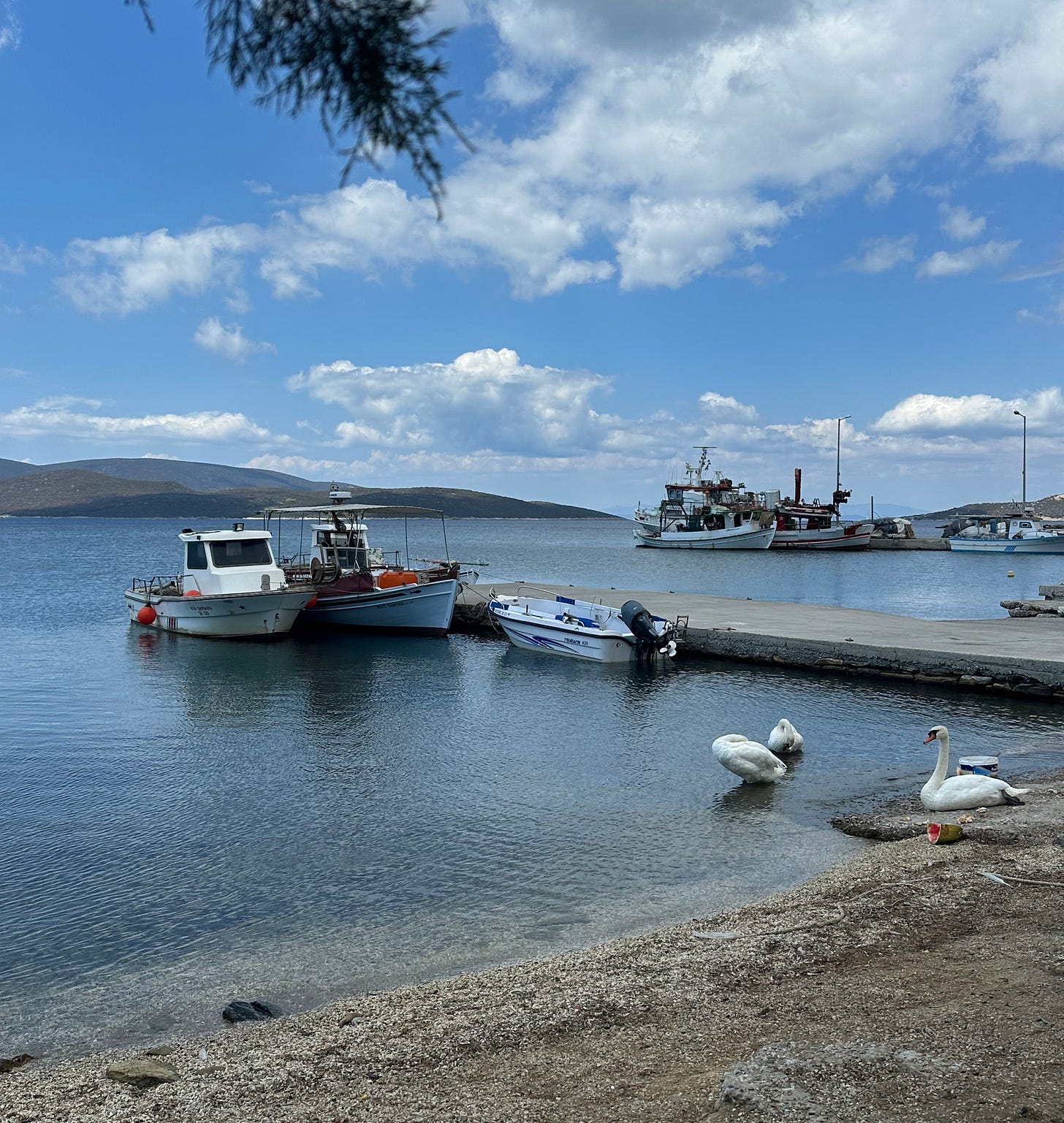
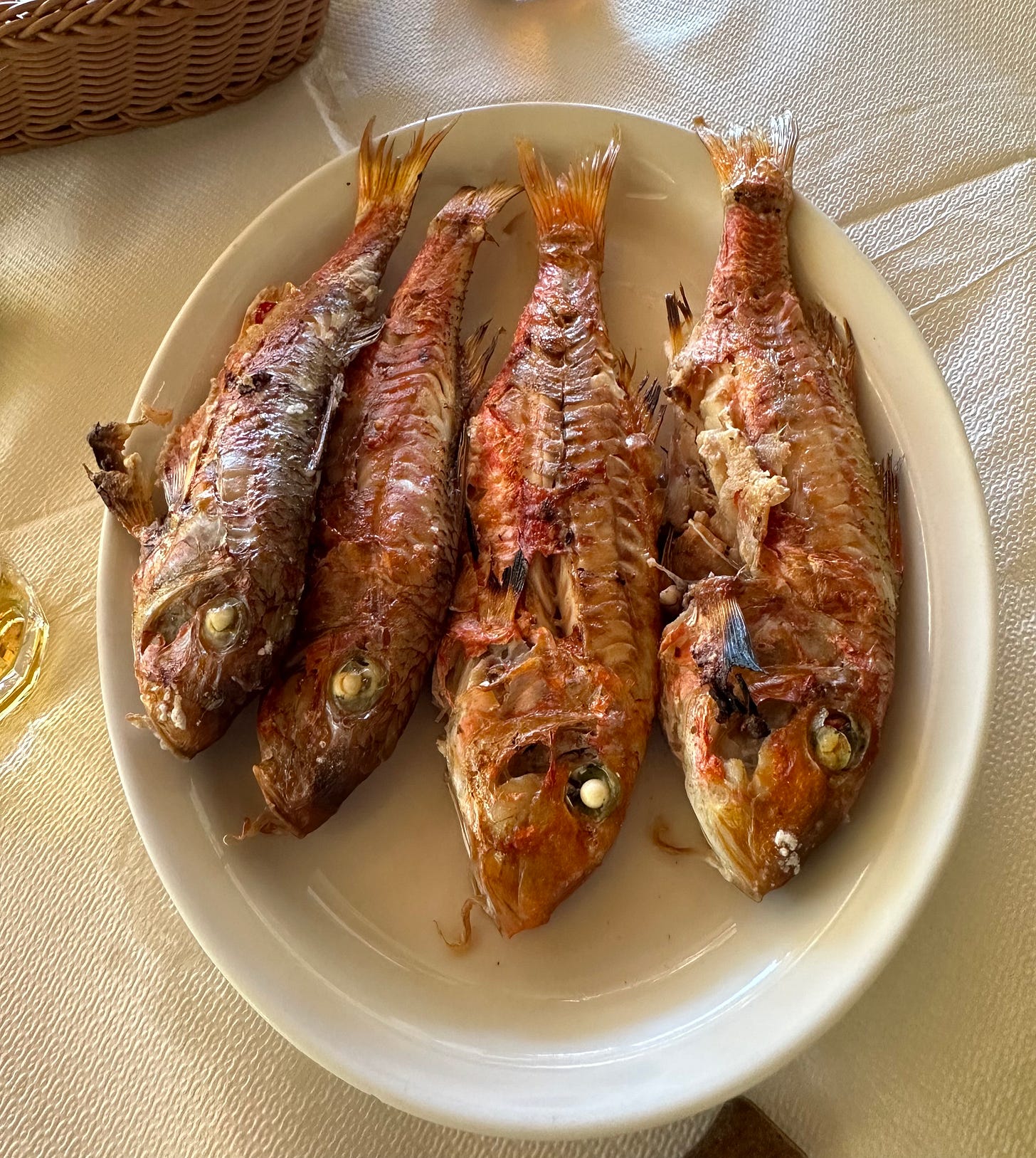
Really enjoyed your Greek interlude
I love your writing that transports me to the salty taverna with sand between my toes, enriched with thoughts of ancient, Troy-bound heroes! Much needed in sweaty August London.